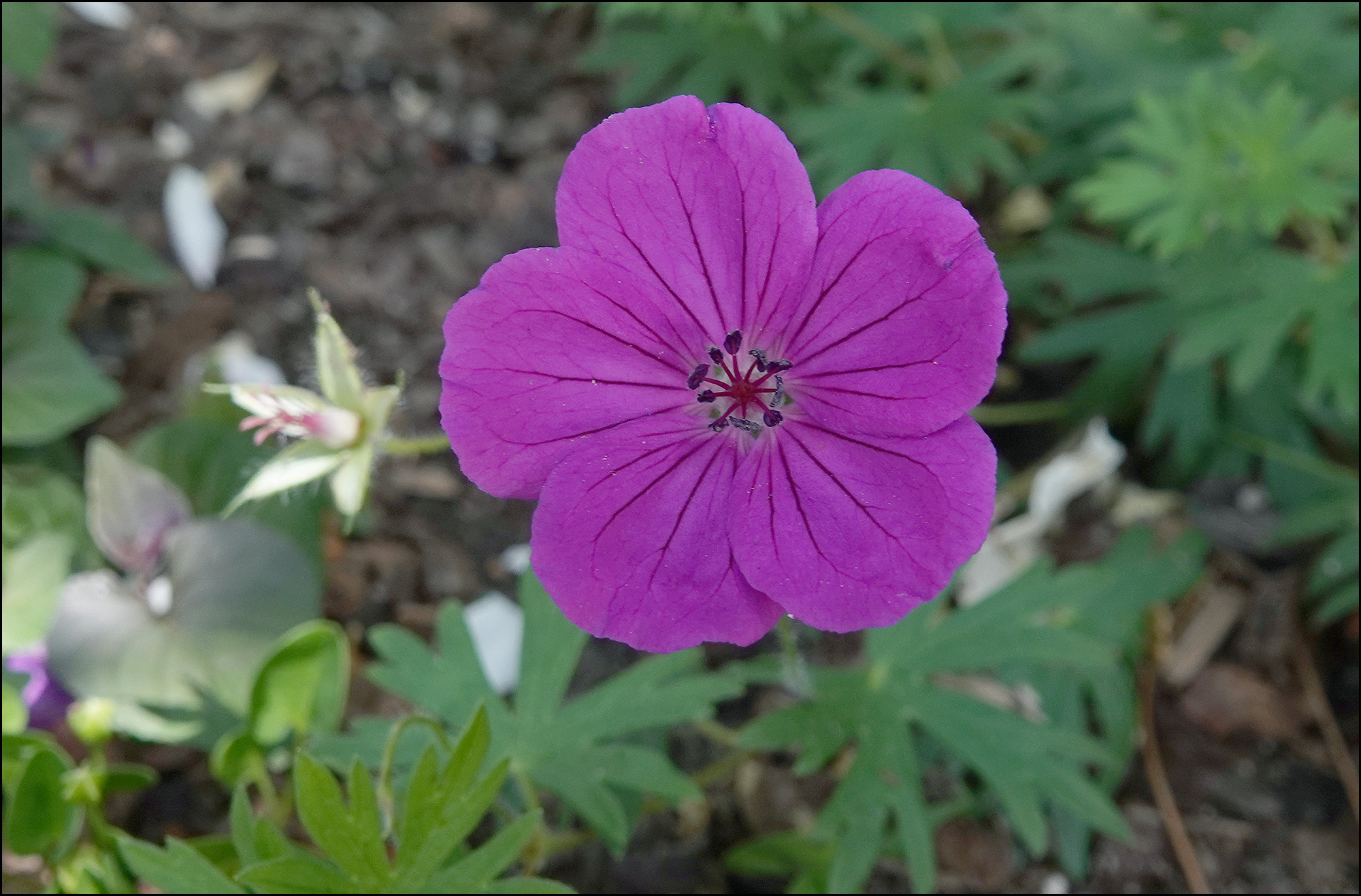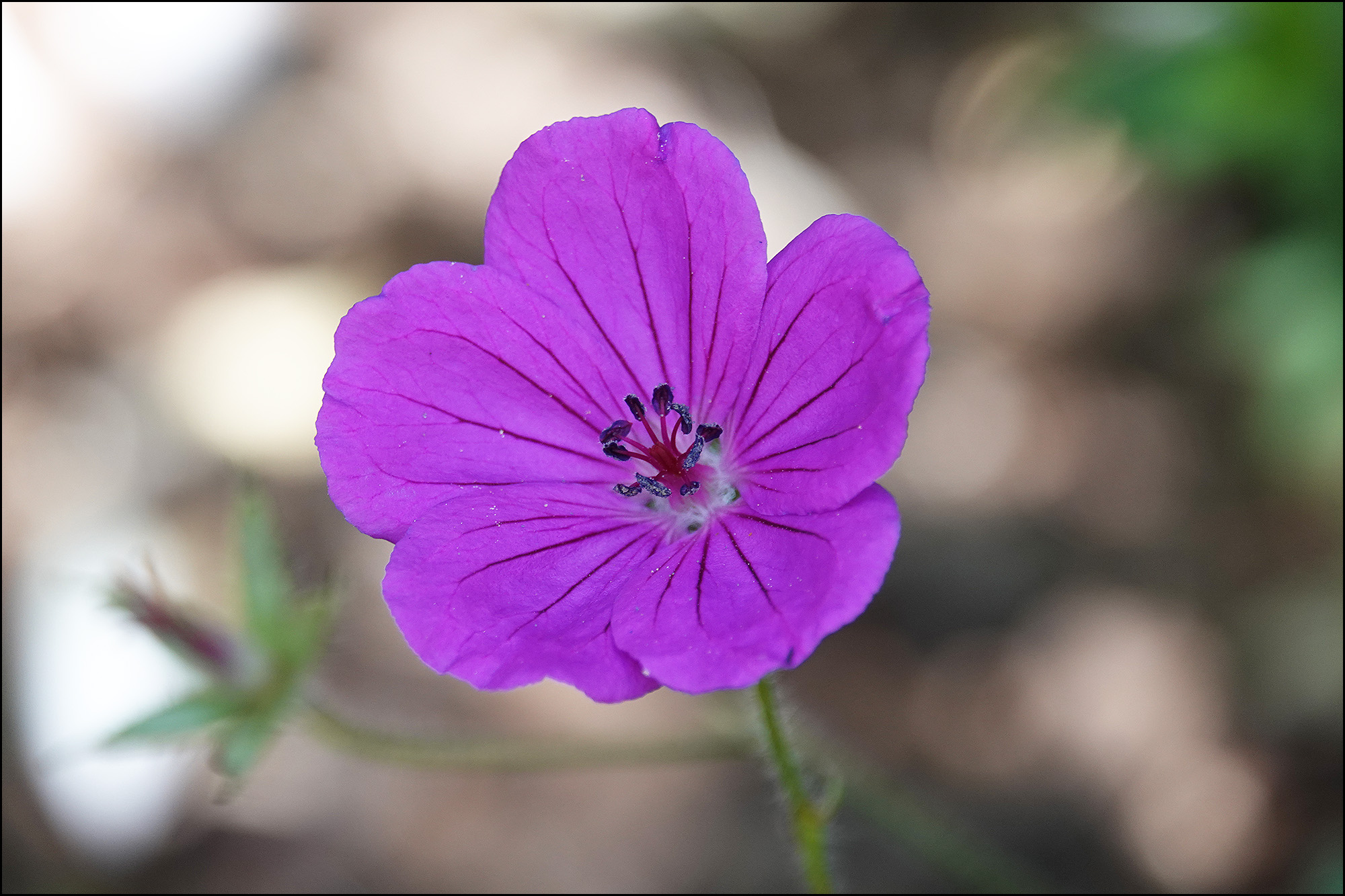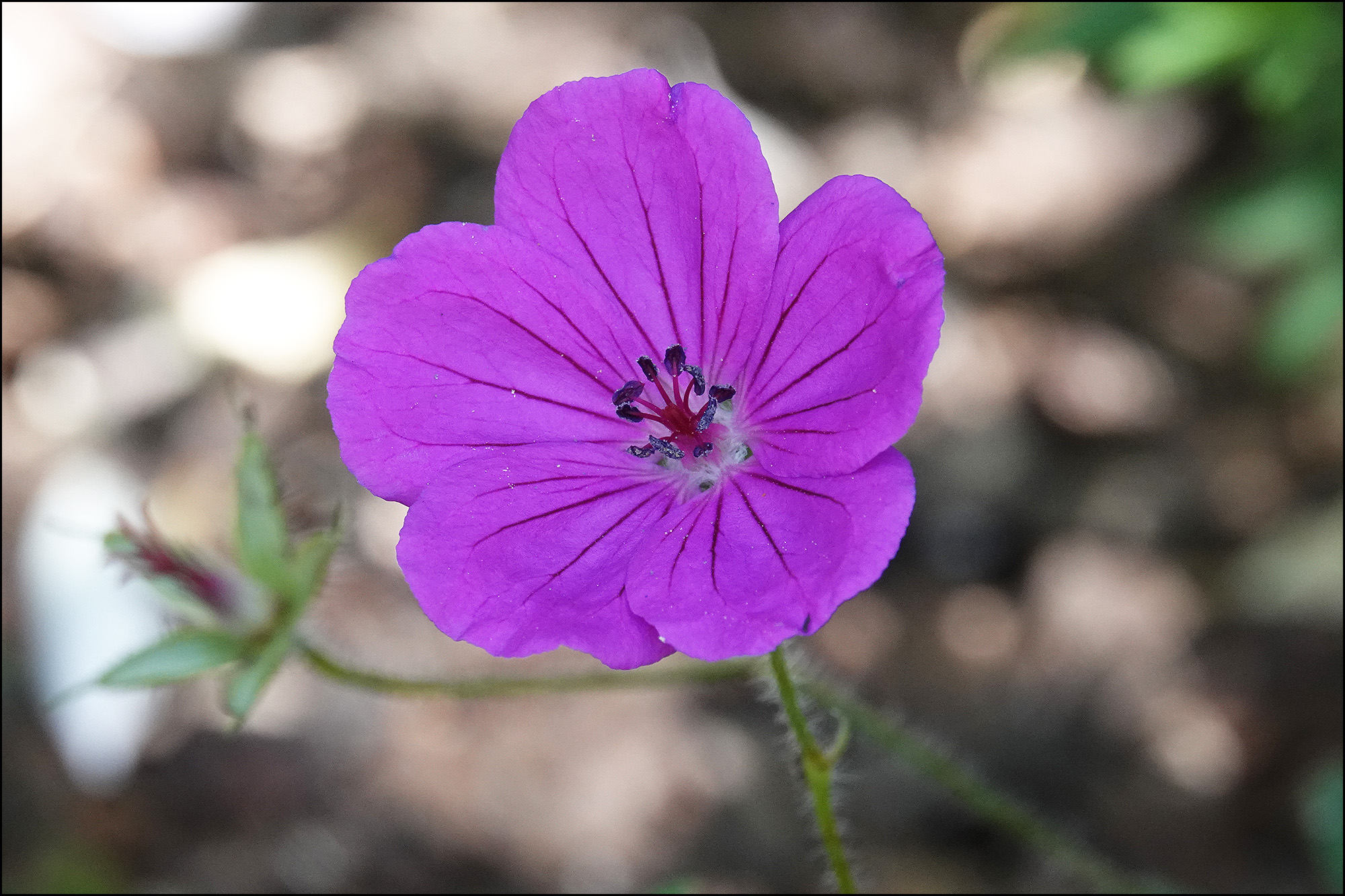A couple of days ago somebody asked me why my wildflower pictures look different than most pictures you see. The answer turns out to be that my camera is weird—but mostly in a good way.
Typically, if you want to take a close-up shot, you set your camera to its widest angle setting because that’s where you can focus the closest. Here’s what this looks like:

That’s OK. But my camera’s lens is an odd one. Normally, the more you zoom, the farther away you have to be. But on the Sony, the closest focus is at the longest zoom setting. It’s also tack sharp. Here’s what that looks like:

The top picture is cropped, and I modified the exposure of both images slightly to make them look more similar. On the normal shot at the top, the angle of view is wide and the depth of field is deep, which means the background is only moderately out of focus. On the bottom shot, taken at 600mm, the angle of view is very narrow and the depth of field is shallow, which means the background is way out of focus. This makes the flower pop out of the background.
On the downside, that shallow depth of field also means that sometimes parts of the flower itself are out of focus. In the example above, the stamens of the flower are sharp but the edges of the petals are a little soft. This may or may not be an effect you like, but you can always use a smaller f-stop if you want a little more depth of field. Like this:

In this one, the entire flower is sharp but the background is still pleasantly out of focus. You can decide for yourself which of these you like better, but I generally prefer the middle picture: mostly sharp and with excellent bokeh in the background. But this is only possible with a camera that focuses closely even at its maximum zoom. In 45 years of on-and-off photography, I’d never come across a lens like that until I got the Sony.
POSTSCRIPT: As usual, none of this applies to professional photographers, who would probably use a 100mm macro lens on a top-of-the-line camera with a full-frame sensor to take pictures like this. That will get you a sharp focus, a fairly narrow angle of view, and a shallow depth-of-field. It will also set you back $5,000 or more.













